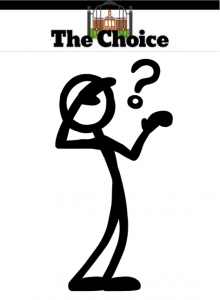 It’s May 1 — international workers’ day in many parts of the world — but for some anxious teens here in the U.S. it’s the day to decide where to go to college. And everyone, it seems, from family to college counselors to teachers to friends is eager to help them make the right decision. Even the boldface font of the New York Times blog on admissions sends a message: The Choice is a big deal, and you’d better make the right one.
It’s May 1 — international workers’ day in many parts of the world — but for some anxious teens here in the U.S. it’s the day to decide where to go to college. And everyone, it seems, from family to college counselors to teachers to friends is eager to help them make the right decision. Even the boldface font of the New York Times blog on admissions sends a message: The Choice is a big deal, and you’d better make the right one.
Of course, there are better and worse choices. Students with a well-defined passion for Aramaic or a unique flavor of epidemiology will need to find the right scholars and research opportunities for their intellectual pursuits. And funding is an important factor to consider for nearly everyone (here are some harrowing charts on the student borrowing bubble).
But there are many students with general liberal arts interests who are seeking one definitive, correct answer: an answer that will lead to the right Sliding Doors style sequence of events. For these students, there are a frustrating number of good choices. A proliferation of PhDs means there are terrific faculty across the country (and of course, around the globe). The internet opens up access to library and museum materials previously segregated by geography and institution. And the precipitous rise of MOOCs means that anyone so inclined can expand their knowledge for no or relatively low cost.
This year, I’ve spoken to a number of students in the throes of the decision. Some are weighing two-year community college to state options; some are choosing among Ivies; most fall somewhere in between in terms of selective options. There are in every case tradeoffs, but no bad options — but the anxiety-provoking paradox of choice is in full effect for these teens.
When pressed for the right choice, I tell them that the best decision that they can make is to bet on themselves. Study hard. Challenge yourself. Get some quantitative skills. Make the most of wherever you go. The people who are struggling with their careers in their 20s and 30s don’t break down neatly along college selectivity lines or Fiske Guide entries. The common element is people who didn’t invest in the knowledge, skills, networks, or adaptive learning approach for today’s market ( this Tom Friedman column captures the shift precisely). And while there are better and worse college fits, there are remarkable number of excellent institutions where you can find all of the above.
So, congratulations to the Class of 2017. Whatever box you checked today — if you’ve committed yourself to learning, you’ve made the right choice.